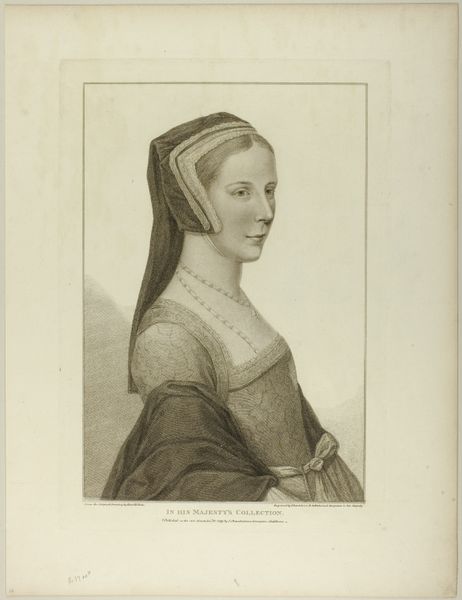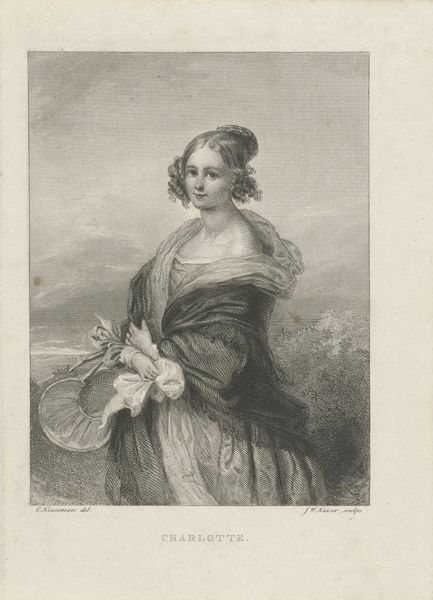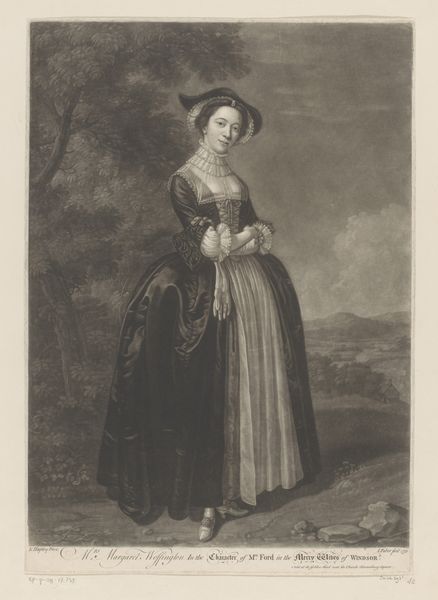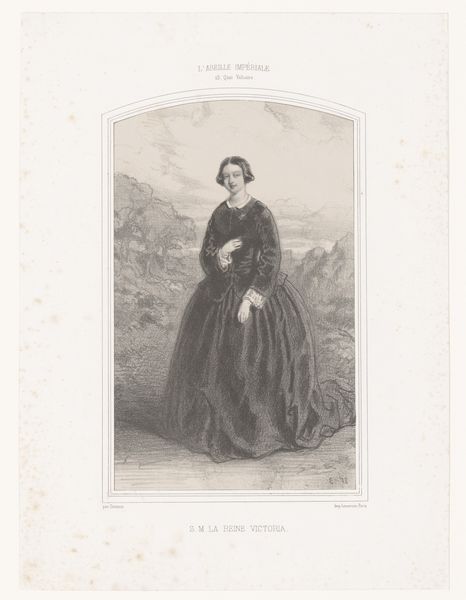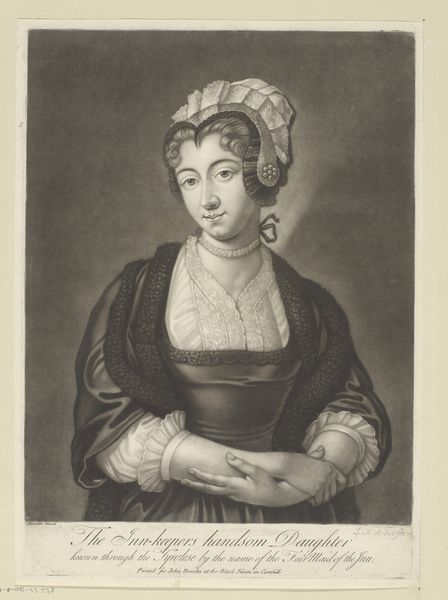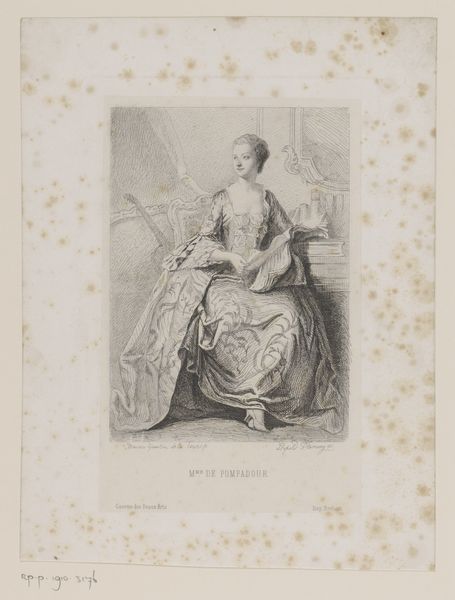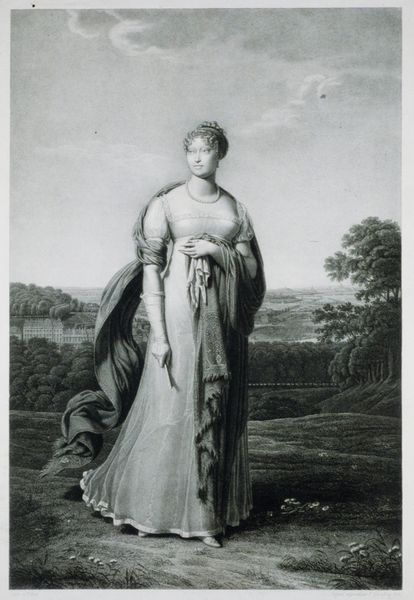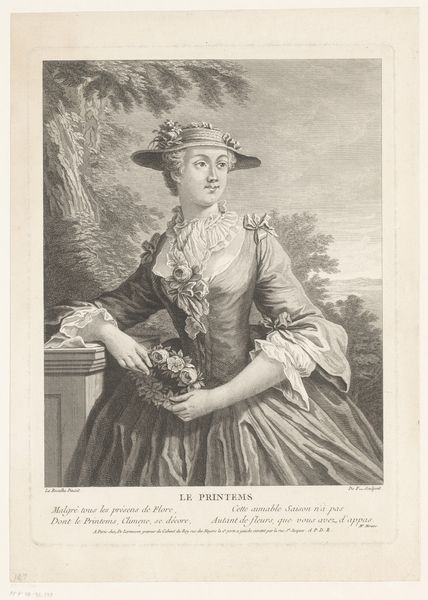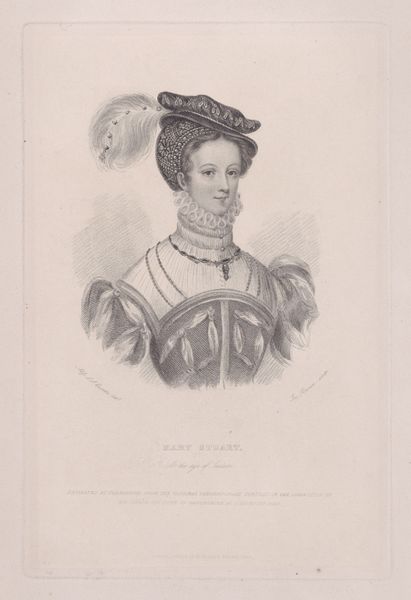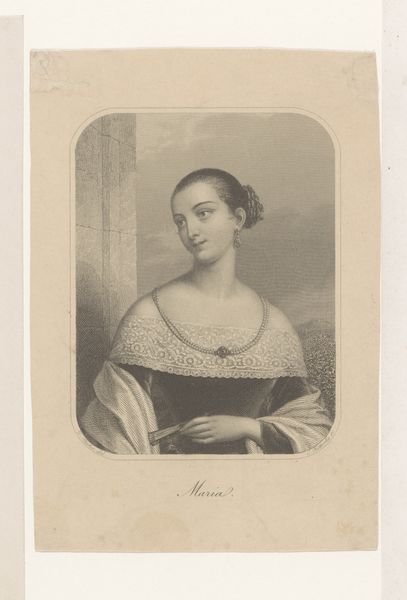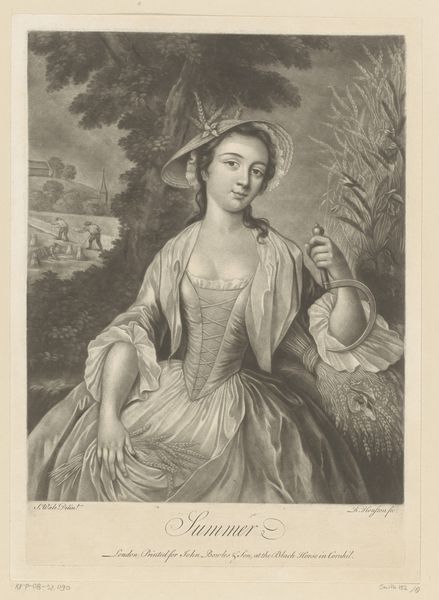
Mary, Queen of Scots returning to Scotland from Calais 1825 - 1875
0:00
0:00
drawing, print
#
portrait
#
drawing
# print
#
pencil drawing
#
romanticism
#
history-painting
Dimensions: Sheet: 7 13/16 × 4 15/16 in. (19.9 × 12.6 cm)
Copyright: Public Domain
Curator: Let’s consider this print, "Mary, Queen of Scots returning to Scotland from Calais". Ferdinand Delannoy executed this piece sometime between 1825 and 1875, and it resides at the Met. Editor: This rendering has a formal stillness to it; Mary seems serene despite the historic drama surrounding her. It looks like it was produced with pencils; What elements capture your attention? Curator: Well, the textures intrigue me. Notice the meticulous detail in her dress and the lace collar. Consider the social implications: Who had access to these fabrics and designs? The production of such garments required skilled labor. Delannoy highlights those things, does he not? Editor: Absolutely, you are right. Now that you mentioned it, the textural difference of her clothes are highlighted, like the dress is different from the lace collar around her neck. So, are you saying that, as a print, the piece underscores a democratisation of image, of how industrial methods of production render possible greater public participation? Curator: Precisely! The printmaking process makes this image accessible to a broader audience. But let's also think about the conditions of its making. How do you see Delannoy benefiting from picturing royalty? Editor: The artist reproduces this portrait of royalty for profit! The artist takes something like “Mary, Queen of Scots” which may not have had much exposure, then the artist is like: “look, this royalty sold well in Europe.” So he’s trying to see what might translate into drawing new buyers to this figure. Curator: The material circumstances – production and access – really shape the reception and understanding of this image, right? Editor: Yes! Now, I understand that while it seems to focus on the subject, the image highlights labor, materiality, and social position. It also draws a distinction between royalty, the artist, and the print maker. Curator: Indeed, it gives us a richer perspective when we consider those production practices.
Comments
No comments
Be the first to comment and join the conversation on the ultimate creative platform.

